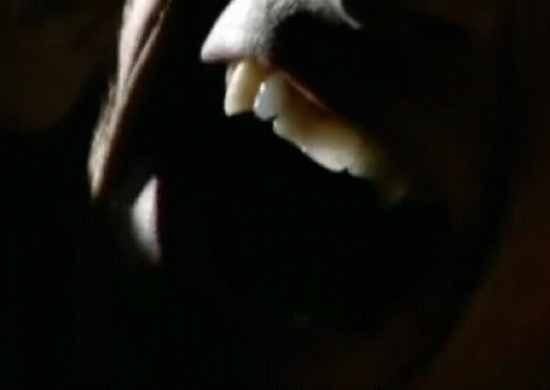 Animals
Animals  Animals
Animals  Weird Stuff
Weird Stuff 10 Weird Things People Used to Do at New Year’s
 Our World
Our World 10 Archaeological Discoveries of 2025 That Refined History
 Weird Stuff
Weird Stuff 10 Fascinating Facts You Might Not Know About Snow
 Miscellaneous
Miscellaneous Top 10 Things Crypto Was Supposed to Change & What Actually Did
 History
History 10 Huge Historical Events That Happened on Christmas Eve
 Music
Music 10 Surprising Origin Stories of Your Favorite Holiday Songs
 History
History 10 Less Than Jolly Events That Occurred on December 25
 Weird Stuff
Weird Stuff 10 Funny Ways That Researchers Overthink Christmas
 Politics
Politics 10 Political Scandals That Sent Crowds Into the Streets
 Animals
Animals 10 Species That Refused to Go Extinct
 Weird Stuff
Weird Stuff 10 Weird Things People Used to Do at New Year’s
 Our World
Our World 10 Archaeological Discoveries of 2025 That Refined History
Who's Behind Listverse?

Jamie Frater
Head Editor
Jamie founded Listverse due to an insatiable desire to share fascinating, obscure, and bizarre facts. He has been a guest speaker on numerous national radio and television stations and is a five time published author.
More About Us Weird Stuff
Weird Stuff 10 Fascinating Facts You Might Not Know About Snow
 Miscellaneous
Miscellaneous Top 10 Things Crypto Was Supposed to Change & What Actually Did
 History
History 10 Huge Historical Events That Happened on Christmas Eve
 Music
Music 10 Surprising Origin Stories of Your Favorite Holiday Songs
 History
History 10 Less Than Jolly Events That Occurred on December 25
 Weird Stuff
Weird Stuff 10 Funny Ways That Researchers Overthink Christmas
 Politics
Politics 10 Political Scandals That Sent Crowds Into the Streets
8 Vampire Myths Explained
Vampires have haunted literature, art and folklore since the dawn of mankind. Stories of vampirism can be traced as far back as biblical times, with Lilith the first rumored vampire. The term vampire did not become an everyday superstition, and fear, until the 17th and 18th centuries in Europe. Was the belief in vampires considered some type of mass hysteria, since numerous countries all had their own form of blood suckers, from the Russian Vurdalak to the Romanian Strigoi? Or are there other explanations for the myths?

Staking a vampire through the heart has been the most popularized method of extermination. Many different countries show references to driving a stake through the heart as well using specific woods to get the job done. Certain types of wood have tied symbolism to Christianity, such as Ash, Blackthorne, Maple, Hawthrone, Buckthorne and Aspen. A stake was driven through the chest cavity to ensure deflation of a bloated corpse, so it would be deflated before its transformation into a revenant was complete. Groans were reported to escape the “vampire’s” mouth when the chest was either pushed on or staked. Gasses trapped in the stomach, intestines and esophagus escaped and pressed against the vocal chords when the pressure of staking was applied.

In Romanian folklore it was thought that a bat, insect or other flying creature that passed over a corpse, could turn it into a revenant (a corpse that returns from the grave). In fact, bats are much like vampires. They are nocturnal, some species drink blood, and they have an acute sense of hearing and smell. The discovery of blood drinking bats only exacerbated the vampire myth.

When suspicion of vampirism fled though an area, it was not uncommon for the towns people to exhume the corpses of their loved ones to check for the tell tale signs of a vampire in the grave. Normally, a vampire’s corpse appeared fresh (not far into decomposition), the cheeks were reported to be full and rosy, the lips and mouth were red, from what appeared to be fresh blood, and the hair and fingernails of the corpse appeared as if they had continued growing. With a basic knowledge of decomposition these signs can be explained. The lack of fresh air and substantially lower temperature of the Earth below can, for lack of a better word, refrigerate a corpse therefore slowing down outer signs of decomposition.
In the case of bloated corpses, blood would be pushed to the surface of the skin, causing rosy cheeks, red lips and even blood in the mouth. When oxygen hits blood, it binds itself to the hemoglobin, causing the shape and appearance of blood to change. Because of the constant temperature and conditions of being underground, it would take longer for blood to dry up and no longer have a bright red appearance.
Hair and fingernails have the appearance of growth after death, but that’s just at first glance. When the body expires, the loss of moisture in the skin causes it to recede giving the fingernails and hair the appearance of growth.

Those who were vampires were thought to have longer than usual eye teeth. Porphyria, also called the Vampire’s disease, is a recessive genetic disease that is characterized by too little hemoglobin being produced in the blood. This disease is said to have happened as a result of European nobility intermarrying. Skin complications of Porphyria include, but are not limited to, photosensitivity, skin blisters, skin itching, skin swelling, hair growth abnormalities (which can explain myths of lycanthropy), skin pigment changes, deterioration of the lips and nose, and receding tissues of the gums and lips. The appearance of someone whose lips and gums have receded would be a gruesome and frightening sight, indeed, making the eye teeth stand out. In most European countries if a child was born with teeth it was considered to be a vampire.

Another telltale sign of a vampire was a lack of reflection in mirrors. Mirrors have always held relevance in folklore when associated with death. It was common superstition in Bulgaria, that if a corpse’s reflection was shown in a mirror, or if mirrors were not covered in the presence of a corpse, then there was an increased likelihood another death would occur. It was also customary for a corpse to be removed from a house through a window, and never through a front door, as to discourage the corpse of a loved one from returning to the home to claim another family member. It was also thought that those who suffered from Porphyria abandoned mirrors from their lives because they did not wish to see their ghastly and ghoulish appearance.

Porphyria appears to be the prior missing tie in the myth of vampires blistering and burning in the sunlight. The bodies of those with Porphyria lack the function of being able to effectively repair their skin cells from UV ray damage.

Garlic holds classic symbolism in vampire folklore. But why garlic? Again, Porphyria is the culprit to this age old myth. Garlic contains chemicals that exacerbates the symptoms of the disease, and causes those with it to avoid it at all costs. Imagine having severe allergies and walking into a field of dust, flowers, and weeds.

Why blood? If a vampire is already dead then what purpose would ingesting blood have on a corpse? Although that part of the myth is left up to the imagination, blood consumption is, none the less, the ultimate telltale sign of a vampire. Porphyria rears its ugly head again. Because a symptom of the disease is a deficiency of hemoglobin in the blood, it was a common practice for those with the illness to drink large quantities of fresh blood in hopes that drinking it would provide the same effect as someone who takes a supplement to meet their daily requirement for a vitamin. Although the afflicted at the time most likely did not know the details of their disease but rather just assumed their illness was from “bad blood” so to speak.








